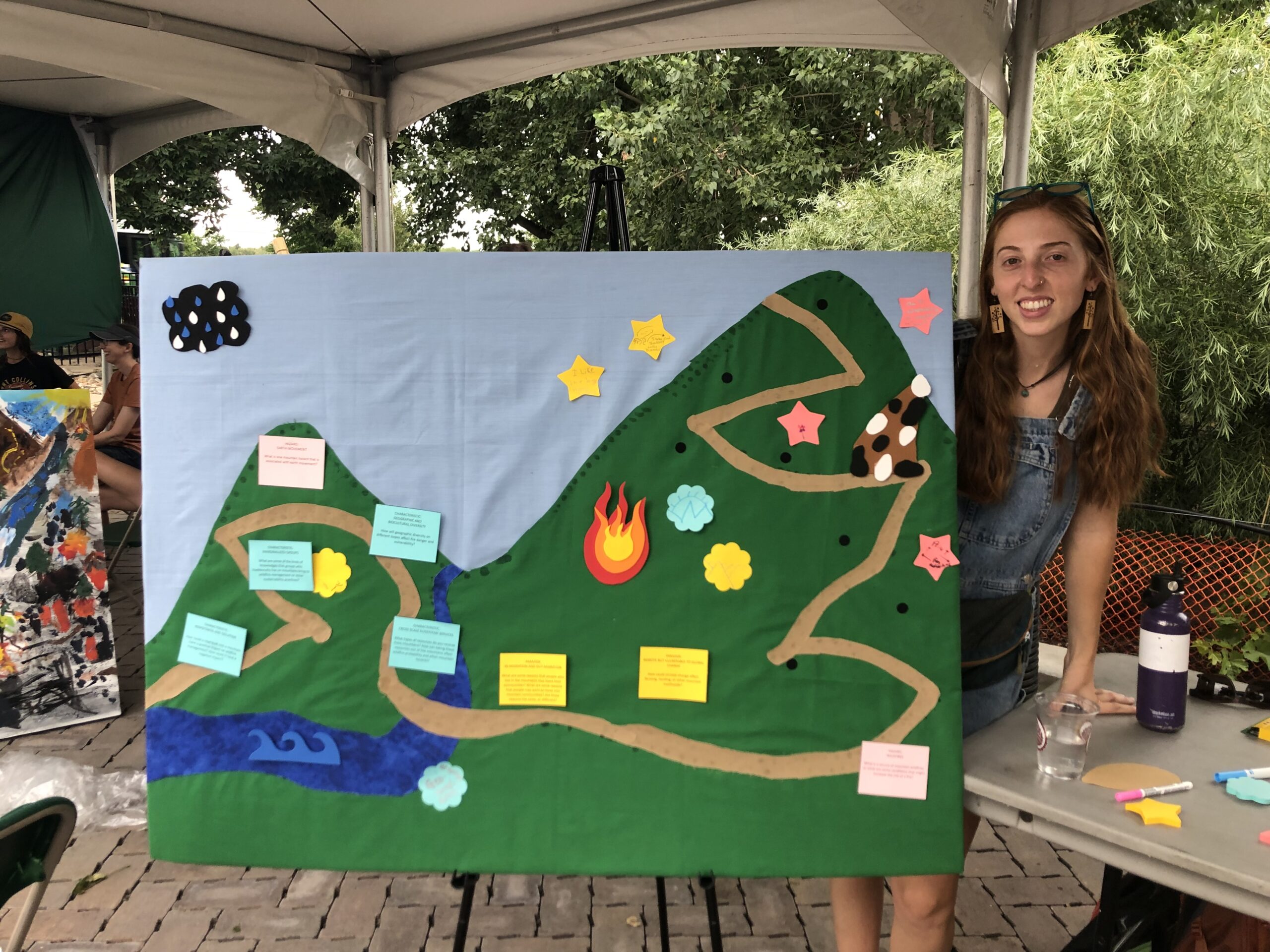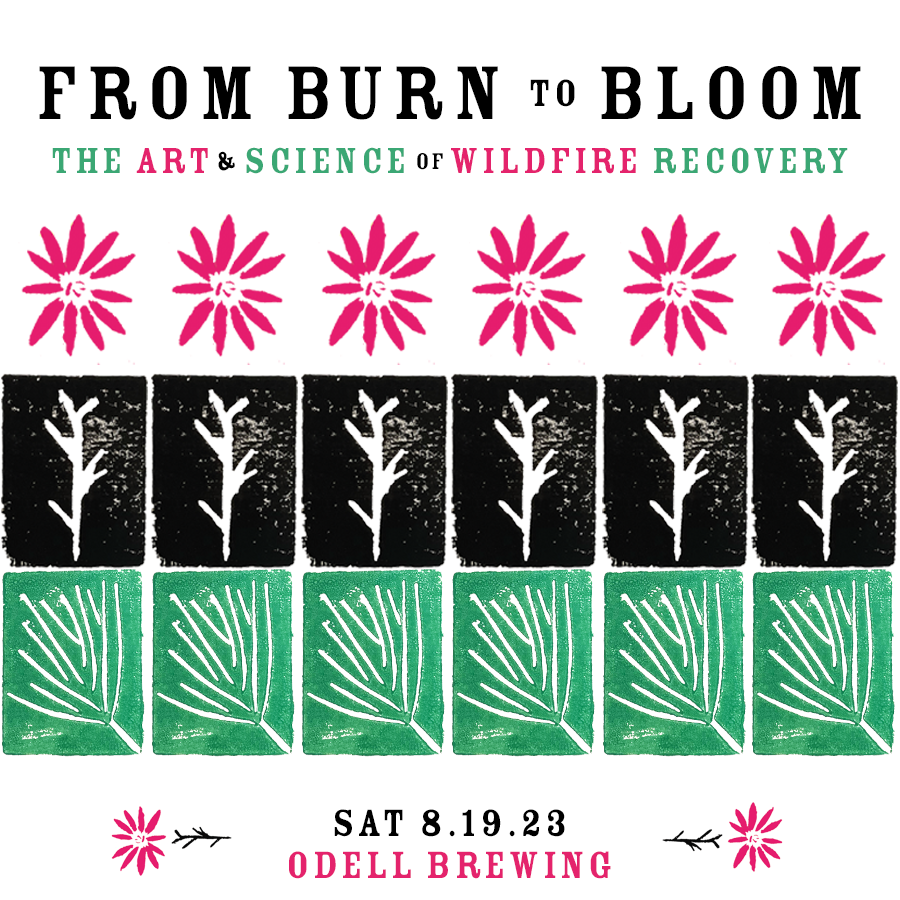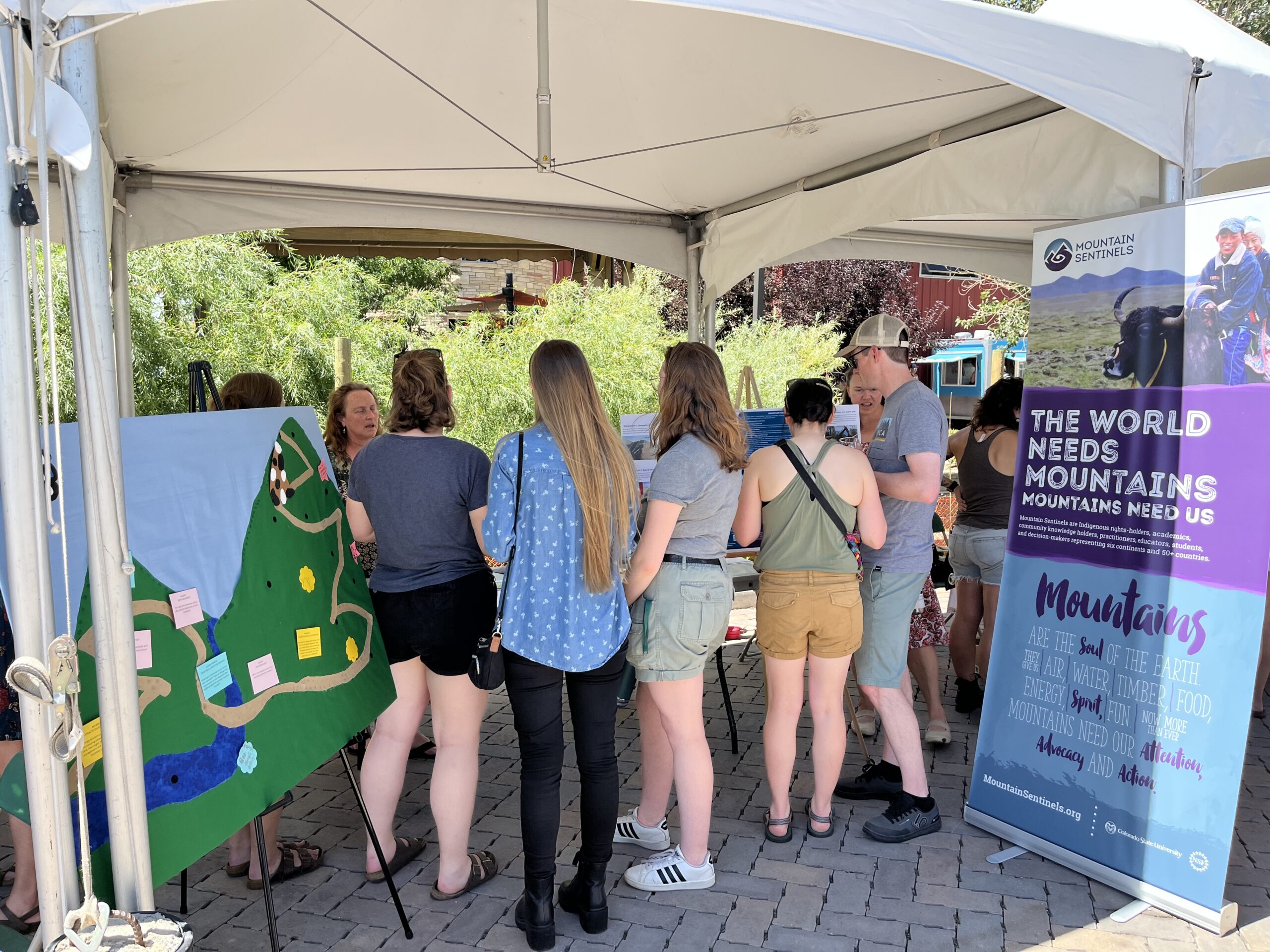By Claire Walther
Claire Walther is a CSU undergraduate student engaged in developing GIS StoryMaps for Mountain Sentinels.
On a sunny Saturday in August, From Burn to Bloom: The Art and Science of Wildfire Recovery taught members of the Fort Collins community about wildfire ecology with interactive activities for all ages. Hosted by the Colorado State University Geospatial Centroid and the Radical Open Science Syndicate, the event brought together artists, scientists, and other curious people seeking to highlight, understand, and process restorative efforts since unprecedented wildfires ravaged the regional landscapes. Walking through the dozen or so booths with various arts, sciences, and activities, visitors could look up to a skyline boasting views of the Rocky Mountain Front Range foothills. Behind the rolling greens and rocky outcroppings serving as the backdrop of Fort Collins, CO, a landscape slowly recovers.
In recent decades, colonizer-driven climate change has increased the number and intensity of wildfires in the region. Decades without a reliance on Indigenous burn practices combined with the rapid expansion of suburbia and other ecologically destructive practices, render the landscape more and more susceptible to these unmitigated wildfires. This event sought to reframe the issue by encouraging active participation in restoration efforts, viewing the destruction as a wake-up call to the need for more mountain stewards.
Many booths featured novel ecological research and community art projects emphasizing the regrowth of the foothills in a post-fire landscape. The Mountain Sentinels focused on the bottom-line: beginning a dialogue for understanding and appreciating mountains as a whole. Our methods? A game!
With a massive, colorful, hand-made game board, we asked interested visitors to spin our humble cardboard wheel and answer a question about mountains. Questions fell into a few categories based on our organization’s research: mountain paradoxes, mountain characteristics, and mountain ecosystem hazards. Our questions were open-ended; there was no wrong or right answer, just a conversation starter. The game was a hit.
Each question encouraged people to think deeper about mountain ecosystems, connectivity, and their role in science, policy, and conservation. Though I came into the event prepared to stimulate these discussions, I learned an incredible amount from each person who played our game. Those occupying different backgrounds, cultural, educational, or otherwise, each brought a unique perspective to their questions and answers.
Discussions ranged from scientific analyses of how wildfire air currents can transport fungi spores across landscapes to lighthearted realizations from younger visitors that they too rely on mountains for ecosystem services – like fresh water, and recreation – like ski trips! We tried to create a comfortable and encouraging space that was both fun and educational. Based on the positive feedback and participation from visitors, I personally feel we succeeded. Hopefully, others will continue to carry those conversations with them, as I certainly will.



